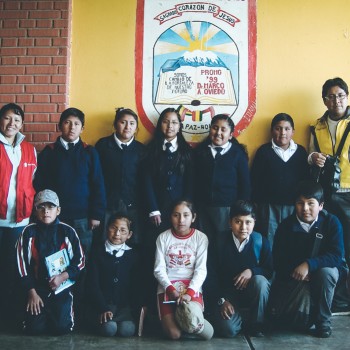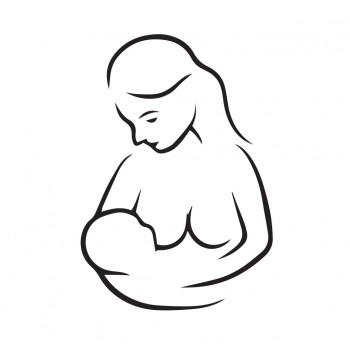ISSUE 54
EDITORIAL BY William Wroblewski
As we explore Bolivia, we use words and labels to understand the people and landscapes we encounter. We use them as tools to quickly communicate ideas and experiences with people around us. Similarly, companies and organizations manufacture logos to visually represent what they are about; they use images, colors and symbols to transmit their brand essence in the blink of an eye. Even the food we buy increasingly comes with labels which summarize their contents, sources, nutritional benefits and prices. These representations speak to us, and provide instant information we use to make assumptions about who and what we are engaged with.
Social theorist Stuart Hall has written extensively on the idea of representation, which he defines in the simplest terms as ‘using language to say something meaningful about, or to represent, the world meaningfully, to other people.’ He also points out that when we identify people or things through language, we are exercising power.
In this process, culture is key. Labels do not stand alone. They are loaded with meanings defined as much by the intentions of those who create them, as by those who interpret them. And this is what makes them powerful.
In this issue of Bolivian Express, we take a look at the idea of ‘Labels’, and how they shape our understanding of how we see the world. We wrote about some of the labels we frequently see and hear about in Bolivia, and try to dig under the simplest definitions to gain a broader understanding of what they mean. We share stories behind the labels we see every day: who is identified by what labels? Who creates them, why and how? Our writers, acted on the belief that by not accepting labels at face value, we can gain a deeper and closer understanding of people and the forces that drive everyday life.
We wrote about some of the ways in which we label people to make a quick reference point – by calling someone a an orphan, an elderly person, a mother. We looked at stereotypes of being from the country and the city, and of being a gringo. And we dug below the labels that come at us every day, from corporate logos and food packaging to the destinations displayed on La Paz’s minibuses. These labels are all around us and in Bolivia, we found, they can have some very interesting and important origins and meanings.
The process of understanding our environment beyond labels can be difficult as we challenge prejudices and assumptions within ourselves. But it can also be fun to play with the novelty, to take these labels to extremes and see how absurd they can often be. But most importantly, the process can be enriching, as we offer ourselves an opportunity to see the people and the world around us in more complex, beautiful ways.
ARTICLES FROM THIS ISSUE

Town and Country
05 Oct, 2015 | Celia Dyson
Rural Migrants in Urban Bolivia Adjacent to La Paz sits the sprawling urban mass of El Alto, a city whose existence centres on the movement of Bolivians from urban to rural areas. Since the National R...

Whose Wall Is It Anyway?
05 Oct, 2015 | Celia Dyson
Public Notice: Rubbish Kills. The Pope Is the Antichrist. Evo 2015. What do these three statements have in common? They are all found written on the walls of La Paz – a city whose graffiti stands out...

Cambas and Collas
05 Oct, 2015 | Anna Bellettato
La Paz and Santa Cruz, the two largest cities in Bolivia, could not be more diverse – both in terms of geography and culture. Paceños are also known as collas. They are those who shaped the traditiona...

OMB: La Paz Dub, Drum and Bass
05 Oct, 2015 | Anna Keeley
The Music Collective and Label Putting Bolivian Beats on the MapIt was 3 am at digital art collective Oí Más Bass’ club night, La Bass, at Roots Reggae Bar in Sagarnaga, but people weren’t getting tir...

Foundlings
05 Oct, 2015 | Rafael Bertoli-Mitchell
Abandonment and Adoption in BoliviaAlfredo is nine years old. He enjoys spending time with his friends, playing outside with his toys and wants to teach sport when he’s older. Three years ago, he was...

Eco-Labels
05 Oct, 2015 | Rafael Bertoli-Mitchell
Sowing the seeds of Bolivian fair tradeAmid smells of dust and car engines, the scent of chocolate is unmistakable. Here in the sprawling mess of El Alto stands El Ceibo, a chocolate factory that...

Humans of Mercado Rodriguez
05 Oct, 2015 | Anna Bellettato
The Vendors of La Paz’s Grand MarketA Photoessay by Anna BellettatoEvery day at Mercado Rodriguez – the biggest food market in La Paz – human activity runs smoothly and frenetically from dawn to sunse...

La Reina
05 Oct, 2015 | Megan Sunderland
Growing Old with Grace (and Dignity, Respect, Support and Freedoms)What does it mean to “be old”? For “La Reina” of the Maria Esther Quevedo Care Home, otherwise known as Alicia Abigal Flores Burgoa,...

Sticks and stones can break my bones and words...may also hurt me
05 Oct, 2015 | Megan Sunderland
‘What is self-esteem?’ asks Beymar Soto, a staff member from the Alcaldia of La Paz to a roomful of schoolchildren. I am at La Escuela Corazón de Jesús de Fé y Alegría, a primary school in La Paz part...

A New Era for the Afro-Bolivian?
05 Oct, 2015 | Olivia Hylton-Pennant
For centuries, the presence of black people in Bolivia went unnoticed and unappreciated. Now they are making their voices heard, but will anything ever change?I arrive at Malegria, a club in La Paz’s...

Starbucks: a New Hope?
05 Oct, 2015 | Benjamin Cooke
‘Globalisation is happening now. That’s why I’m here. It’s happening every minute, every day. You can’t stop it,’ Angela tells me, before sipping a cappuccino as cold now as our conversation has been...

Destination Known: The Letreros of La Paz
05 Oct, 2015 | Anna Keeley
In the windscreen of every minibus and trufi in La Paz sits a handful of letreros indicating geographical locations; simply catch sight of your destination, walk out into the road and climb aboard. T...

Breastfeeding in (La) Paz
05 Oct, 2015 | Megan Sunderland
The vegan restaurant Red Monkey, in La Paz’s San Miguel neighbourhood, has started offering mothers a free cup of tea as they breastfeed in the restaurant. The offer is meant to celebrate Internationa...

The 5 types of gringos
05 Oct, 2015 | Olivia Hylton-Pennant
Since the 18th century, the term ‘gringo’ has been used to refer to foreigners in Spanish-speaking countries. Although gringos come from all walks of life, there are five archetypal gringos that are e...








